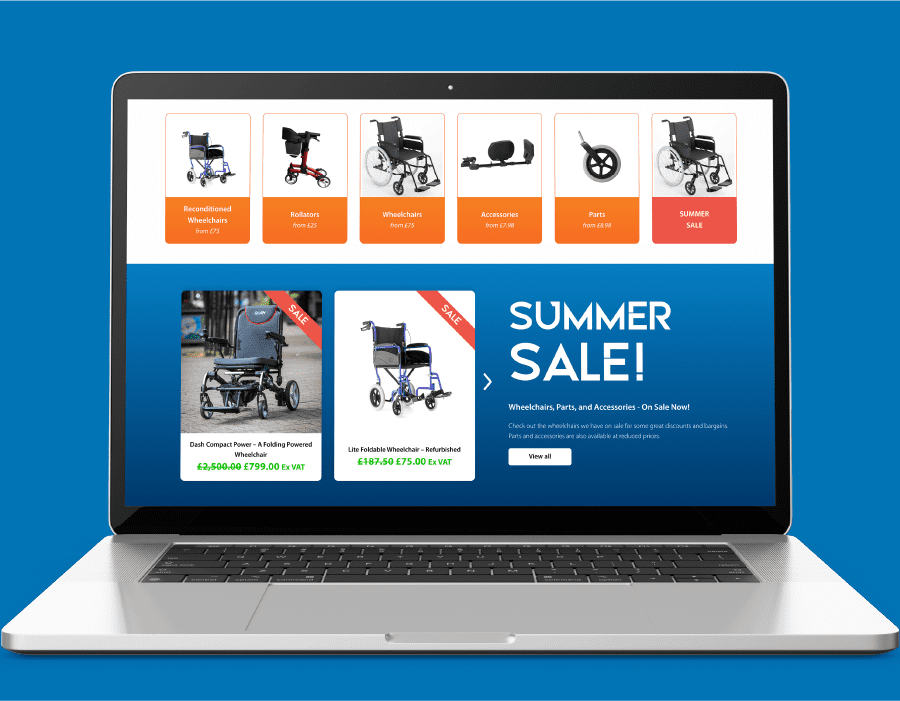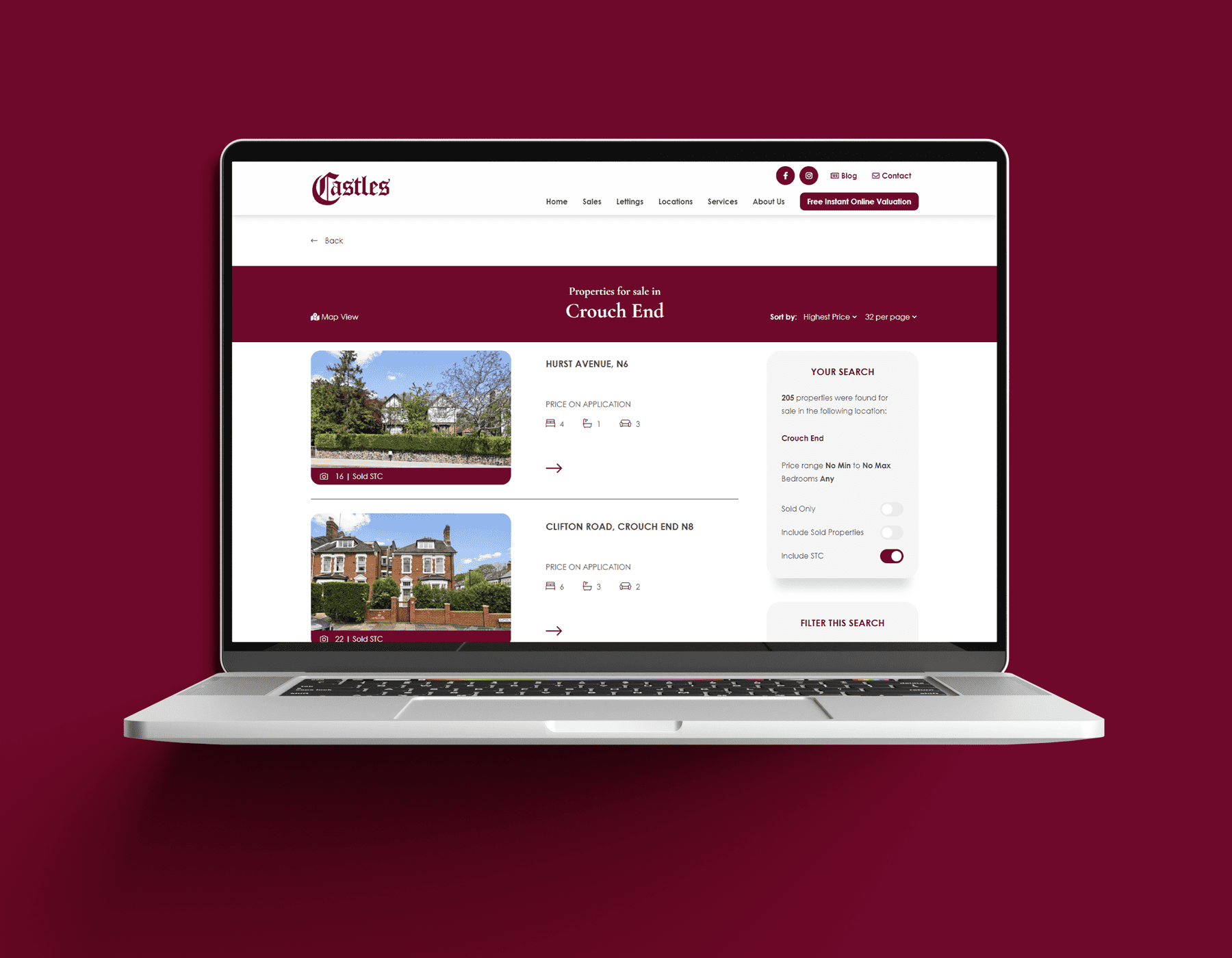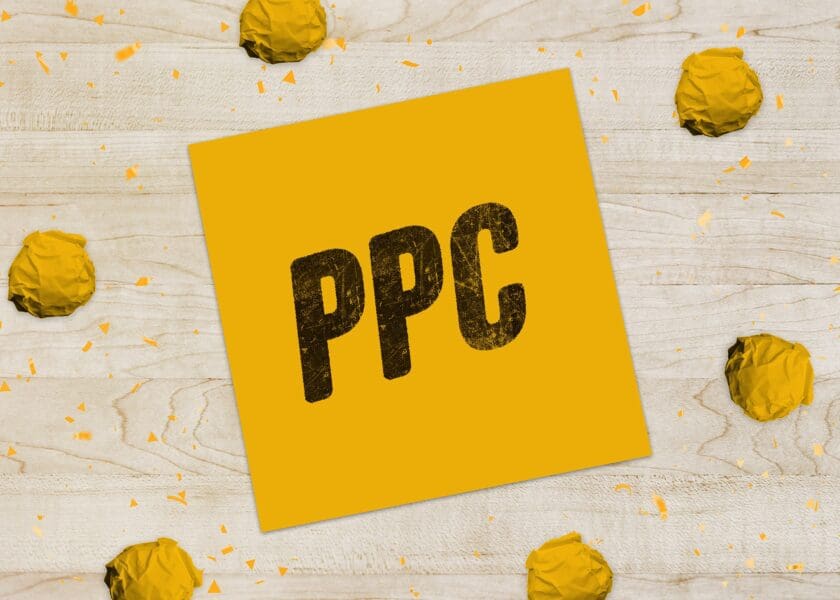Proud to work with
Audience Targeting
We use advanced audience targeting tools to ensure your social media advertising reaches the right people at the right time. By utilising demographic data, interestsand behavioural insights, we create precise audience segments that minimise wasted spend and increase engagement. Whether your audience is broad or niche, our targeting strategy is designed to deliver the best possible results.
Ad Strategy & Creative
Our creative ad strategies ensure your message resonates with your audience and drives action. We develop customised ad concepts that align with your goals, whether it's growing brand awareness or generating conversions. By blending compelling visuals with strong copy, we ensure your ads are optimised for engagement, click-through ratesand conversions across platforms like Facebook, Instagramand LinkedIn.
Campaign Optimisation
Once your ads are live, we continuously optimise your campaigns for peak performance. Using real-time data, A/B testingand advanced analytics, we refine targeting, adjust bidsand update creatives to ensure your social media advertising delivers the highest ROI. You’ll receive regular performance reports that show exactly how your campaigns are doing, making it easy to measure success.
Facebook & Instagram Ads
Our expertise in Facebook and Instagram advertising helps you utilise the full potential of these platforms. We create ads that build brand loyalty, drive engagementand generate leads. Whether it’s single image ads, carousel formats, or video, we tailor your campaign to fit the platform’s strengths and ensure maximum reach and impact.
LinkedIn Ads for B2B
LinkedIn is an essential platform for B2B advertisingand our approach ensures your ads speak directly to decision-makers. We craft campaigns that drive high-quality leads and build relationships within the professional community. Through Sponsored Content or InMail, we help you maximise your LinkedIn advertising efforts to reach the right audience at the right time.
Transparent Reporting
Transparency is key to everything we do. Our in-depth reports provide insights into all key metrics—click-through rates, conversion ratesand cost per lead—so you always know where your budget is going. We give you the data you need to make informed decisions, helping you understand the real impact of your social media advertising.crease brand recall and conversions.
Channels We Work With
Facebook Marketing
Our Facebook Marketing services help your business connect with the right audience. We handle everything from targeted ad campaigns to organic content management, ensuring your brand stays visible and engaging. Whether your goal is to build awareness, generate leads, or increase conversions, we deliver campaigns tailored to your objectives. With advanced targeting and detailed performance tracking, we maximise your return on investment and help drive real, measurable results from your Facebook presence.
Instagram Marketing
With our Instagram Marketing services, we craft visually compelling content that captures attention. We manage your Instagram presence, from engaging organic posts to high-performing paid ads. Our team ensures your content resonates with your audience, driving engagement and brand growth. By leveraging Instagram’s targeting options and tracking performance in real-time, we help you connect with the right followers and turn engagement into tangible business results.
LinkedIn Marketing
Our LinkedIn Marketing services focus on positioning your brand in front of industry leaders and decision-makers. Whether through organic content or paid campaigns, we help you build credibility, grow your networkand generate leads. We manage your LinkedIn profile, develop targeted ad campaignsand track performance to ensure your business stands out. For B2B companies, we deliver strategies that drive engagement and strengthen your professional presence.
-
How Social Media Advertising Boosts ROI
Social media advertising is one of the most effective tools for reaching your target audience with precision and maximising your ad spend.
By utilising platforms like Facebook, Instagramand LinkedIn, you can connect directly with users who are most likely to engage with your business. These platforms offer advanced targeting capabilities, allowing you to reach the exact demographic, interest group, or behavioural segment that matters most to your brand. Whether your goal is driving traffic to your website, increasing brand awareness, or generating high-quality leads, social media advertising enables you to reach your audience at the right time and in the right place.
With features like Custom Audiences, you can target users who have already interacted with your brand—whether they’ve visited your website, engaged with a post, or clicked on an ad. Lookalike Audiences further refine this approach, helping you reach new users who share similar characteristics with your existing customers, amplifying your campaign’s reach without wasted spend.
This level of targeting ensures your budget is invested where it will have the greatest impact, delivering measurable results. By continuously refining and retargeting your audience, you can optimise your campaigns for better performance, ensuring you achieve the highest return on investment (ROI) for your ad spend.
Ultimately, social media advertising allows you to engage users more effectively and convert them into long-term customers.
-
The Importance of Facebook Ads for B2C Marketing
Facebook’s vast user base makes it an exceptional platform for social media advertising, particularly in the B2C space.
With over 2.8 billion monthly active users, Facebook allows businesses to reach an incredibly broad yet highly specific audience. Whether you’re looking to launch a new product, promote a service, or drive traffic to your website, Facebook provides the tools to engage your target audience on a personal level, ensuring your message resonates.
One of Facebook’s greatest strengths lies in its different types of ad formats. From video ads to carousel ads and everything in between, you have the flexibility to choose the format that best suits your campaign objectives. This versatility allows for creative storytelling that captures your audience’s attention, whether you’re building brand awareness or driving direct conversions.
Facebook’s advanced targeting capabilities are key to its effectiveness in B2C advertising. You can pinpoint your audience by focusing on detailed demographics, interestsand online behaviours. Whether you want to target specific age groups, geographic areas, or niche interests, Facebook enables you to refine your targeting, ensuring your ads are seen by those most likely to engage with your brand.
The combination of personalised engagement and precise targeting makes Facebook a highly efficient platform for maximising ad performance. It allows businesses to minimise wasted spend and focus on reaching the users most likely to convert, ensuring your campaigns deliver strong, measurable results.
-
Why Instagram Ads Work for Brand Awareness
Instagram’s visually-focused platform makes it a prime space for building and enhancing brand awareness.
With over 1 billion active users, Instagram offers a unique opportunity for businesses to connect with audiences through high-impact visuals and engaging storytelling. The platform’s image-first nature is ideal for brands looking to create an emotional connection with users, as it allows for creative freedom that captivates attention and encourages interaction.
Instagram ads seamlessly blend into the user experience, whether they appear in the main feed or as part of Instagram Stories. These ads don’t feel disruptive but rather flow naturally, making them more likely to engage users compared to more traditional advertising formats. The ability to use a variety of ad types—from single image posts to carousels, videosand story ads—gives businesses the flexibility to choose the format that best fits their message and audience.
For brands aiming to strengthen their presence, Instagram provides a powerful way to visually tell your story. By using rich imagery, videosand interactive features, businesses can create content that resonates on a deeper level with their audience. Whether you’re launching a new product, promoting a lifestyle, or building long-term brand affinity, Instagram ads offer a dynamic space to craft compelling narratives that engage and inspire.
As a result, Instagram not only drives brand awareness but also generates higher engagement rates, making it a powerful tool for businesses looking to make a lasting impact online.
-
LinkedIn Ads for Targeting Decision-Makers
For B2B marketing, LinkedIn stands out as the go-to platform for connecting with key decision-makers and professionals.
LinkedIn’s unique positioning in the business world provides unmatched opportunities for businesses to engage directly with the individuals who matter most—whether they’re C-level executives, department heads, or other high-level professionals. The platform’s social media advertising options allow businesses to target specific industries, job titlesand even company sizes, ensuring your ads are seen by the right audience at the right time.
With LinkedIn Ads, you can tailor your campaigns to achieve specific business goals, whether that’s building brand awareness among decision-makers or driving lead generation through targeted offers. From Sponsored Content that appears directly in a professional’s feed to Sponsored InMail that allows you to send personalised messages, LinkedIn’s advertising options provide a direct line to prospects who are not only interested but ready to engage.
The platform’s professional environment makes LinkedIn a highly effective tool for B2B campaigns. It allows you to focus on high-quality leads who are more likely to convert into long-term partners or clients. By delivering your message in a space where business conversations are already taking place, you ensure that your brand is seen as credible and relevant, paving the way for meaningful business interactions.
In the B2B marketplace, LinkedIn offers a targeted and strategic approach to social media advertising that fosters deeper connections, builds relationshipsand ultimately drives business growth.
-
The Role of A/B Testing in Social Media Ads
A/B testing is an essential component in fine-tuning and enhancing the effectiveness of your social media advertising campaigns.
This process involves testing multiple versions of your ads—whether it’s the copy, imagery, call-to-action, or even the targeting strategy itself—to identify what drives the best engagement and conversions. By running side-by-side comparisons, you gain real-time insights into how different elements resonate with your audience. This allows you to make data-driven decisions that lead to better performance.
Even small changes can produce significant improvements. A simple tweak to a headline, the choice of an image, or adjusting the tone of a call-to-action can dramatically increase click-through rates and overall conversion levels. A/B testing takes the guesswork out of campaign optimisation, giving you concrete evidence of what works and what doesn’t.
At the heart of our optimisation process, A/B testing is a key tool we use to ensure every campaign reaches its full potential. We continuously test, learnand refine your ads, so you get the best possible return on investment (ROI). By systematically evaluating each element of your ads, we can scale the winning variations, ensuring your advertising budget is allocated towards what works best.
With A/B testing as a foundation of our approach, we guarantee that your campaigns aren’t just launched—they’re continuously improved for maximum impact.
-
How Retargeting Ads Can Increase Conversions
Retargeting is one of the most powerful strategies in social media advertising, giving you a second chance to convert potential customers who have already shown interest in your brand.
This technique allows you to reconnect with users who have previously interacted with your website, engaged with your social media profiles, or clicked on an ad but haven’t yet taken the desired action—such as making a purchase or filling out a contact form. By serving tailored retargeting ads to these warm leads, you significantly increase the likelihood of bringing them back to complete that crucial next step.
The strength of retargeting lies in its ability to stay top-of-mind for users who may have dropped off the sales funnel. Whether they’ve browsed your website without making a purchase or engaged with your social media content but didn’t follow through, retargeting keeps your brand in front of these highly qualified prospects. This subtle reminder can be the nudge they need to return and take action.
Retargeting ads work exceptionally well because they target users who are already familiar with your brand, meaning they are much closer to converting than cold prospects. As a result, retargeting is highly effective at pushing warm leads further down the funnel and turning previous visitors into paying customers, all while improving your overall return on ad spend (ROAS).
By utilising retargeting in your campaigns, you can capitalise on past interactions and drive higher conversion rates with a more strategic approach.
-
The Importance of Creative Assets in Social Media Advertising
Creative assets—images, videosand ad copy—are the foundation of any high-performing social media advertising campaign.
Strong visuals are essential in capturing your audience’s attention in social media. Eye-catching images or compelling videos are often the first step in drawing users in, while well-crafted ad copy provides the nudge they need to engage further. Whether it’s an Instagram video, a Facebook carousel, or a LinkedIn Sponsored Content post, the right creative assets are crucial to ensuring your ads stand out and drive action.
Every creative element plays a key role in the success of your campaign. We take a strategic approach to developing visuals and copy that align perfectly with your brand’s messaging and campaign goals. Each asset is carefully tailored to the platform and audience, whether you’re aiming to build brand awareness, generate leads, or drive conversions.
Consistency across your visuals and messaging is also critical. Your creative assets need to not only capture attention but also create a narrative that resonates with your target audience. A well-crafted image or video can spark initial interest, but it’s the alignment with persuasive ad copy that pushes users to take the next step, whether that’s clicking through to your website or making a purchase.
Creative assets are more than just design elements—they’re the driving force behind your campaign’s successand we ensure every piece is crafted to contribute to achieving your marketing objectives.
-
Understanding the Metrics That Matter in Social Media Ads
Tracking the right metrics is crucial for understanding the success of your social media advertising campaigns.
When it comes to measuring performance, focusing on the correct key performance indicators (KPIs) allows you to evaluate how well your ads are achieving their objectives and provides clear insights into the effectiveness of your strategy. Metrics like click-through rate (CTR), conversion rate, cost per acquisition (CPA)and return on ad spend (ROAS) are the most critical indicators of how your campaign is performing in real time.
CTR, for example, reveals how compelling your ad creative and messaging are by measuring the percentage of users who clicked on your ad after seeing it. Conversion rate, on the other hand, tracks how effectively those clicks are translating into valuable actions—whether it’s a sale, lead generation, or another key business objective. CPA tells you the cost of acquiring a customer or lead through your advertising efforts, helping to assess the efficiency of your spend.
Meanwhile, ROAS is one of the most important metrics to monitor, as it shows the return you’re getting for every pound spent on advertising. A high ROAS indicates that your ads are not only reaching the right audience but are also delivering tangible business results. By continuously tracking and optimising these metrics, we ensure your social media advertising campaigns are driving meaningful outcomes, improving over timeand contributing to your broader business goals.
In short, focusing on these KPIs allows us to fine-tune campaigns and maximise the return on your investment, ensuring your ads consistently deliver high-impact results.
FAQs
How much should I budget for social media ads?
The budget depends on your objectives, audience sizeand competition. A test budget of £1,000+ is recommended for initial campaigns.
Which platform is best for social media advertising?
The best platform depends on your target audience. Facebook and Instagram work well for consumer-focused ads, while LinkedIn is ideal for B2B marketing.
How soon can I expect results?
Results typically begin to appear within 1–2 weeks of launching a campaign. However, full optimisation can take a month or more for best results.
Can you target specific demographics?
Yes, we use advanced targeting options to reach specific demographics, interestsand behaviours on Facebook, Instagramand LinkedIn.
What is your approach to A/B testing?
We continuously run A/B tests to optimise your campaigns. By testing different ad variations, such as images and copy, we identify what drives the best results and scale from there.
What’s the difference between Facebook and Instagram Ads?
While both platforms use the same ad system, Instagram is more visually focused and works well for brands with strong imagery and video content.
Do you handle ad creative as well?
Yes, we assist in creating ad visuals and copy, but we will need certain assets from you, such as brand guidelines, logos, product imagesand any relevant visuals. Our team ensures the final creative aligns with your brand and campaign goals.
How do you track campaign success?
We track key metrics such as click-through rates, conversionsand return on ad spend. Regular reports are provided to ensure transparency and performance insights.
Can you run ads for both B2B and B2C campaigns?
Yes, we create customised strategies for both B2B and B2C clients, depending on your campaign goals and target audience.
What happens after the campaign ends?
After the campaign, we analyse performance, provide insightsand recommend strategies for future advertising efforts based on the results.







